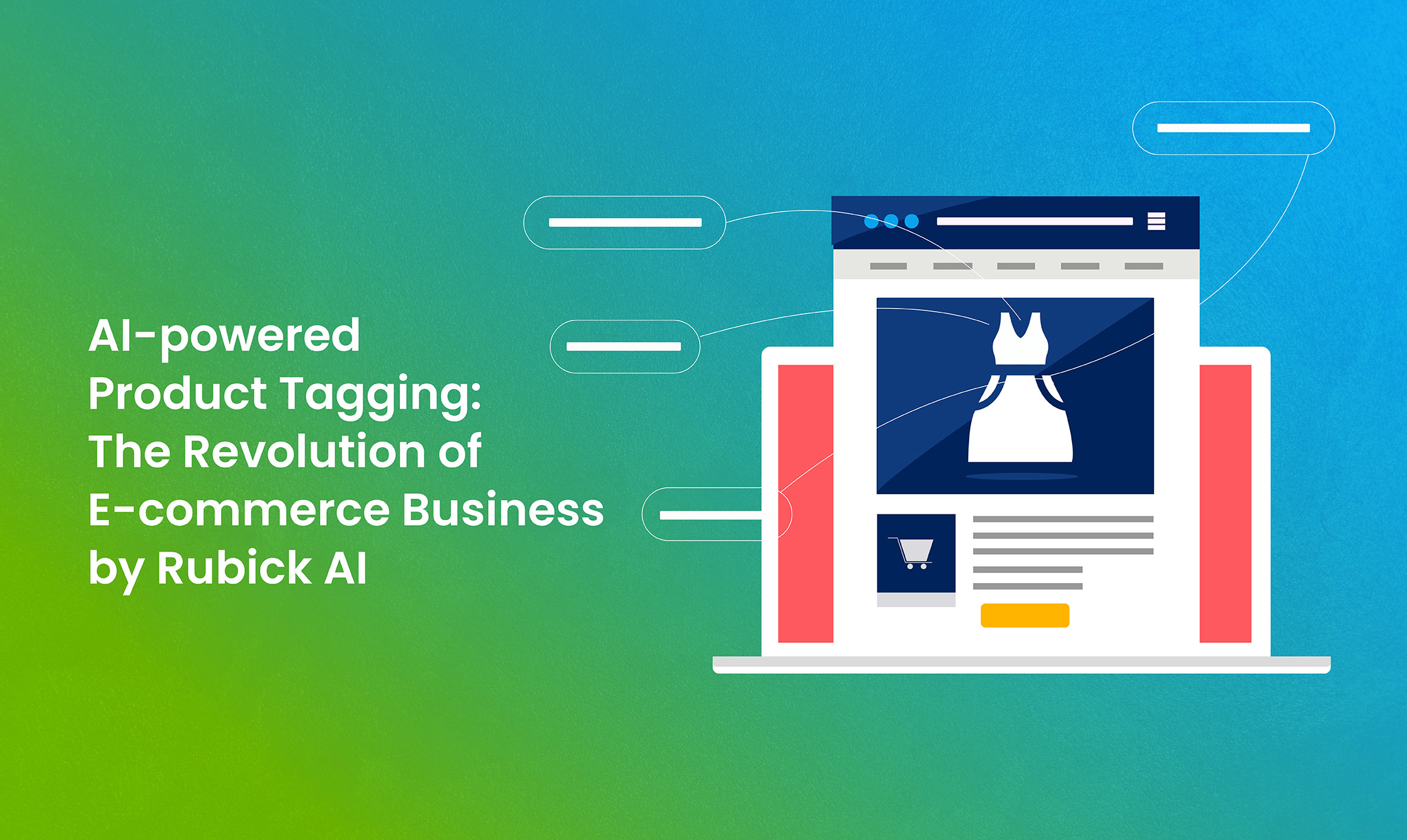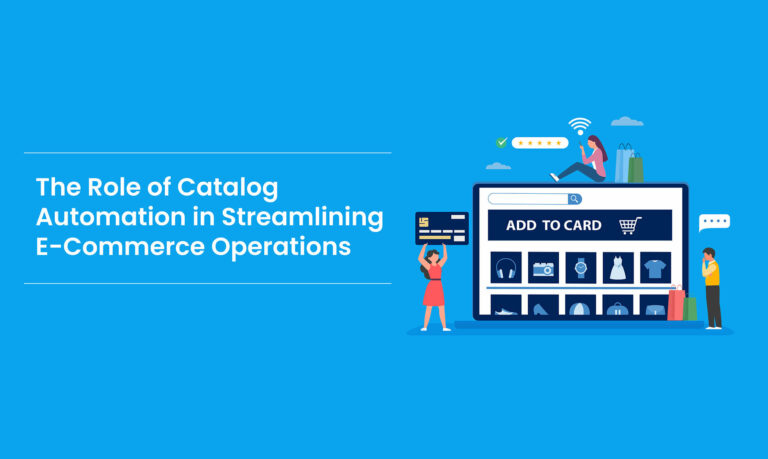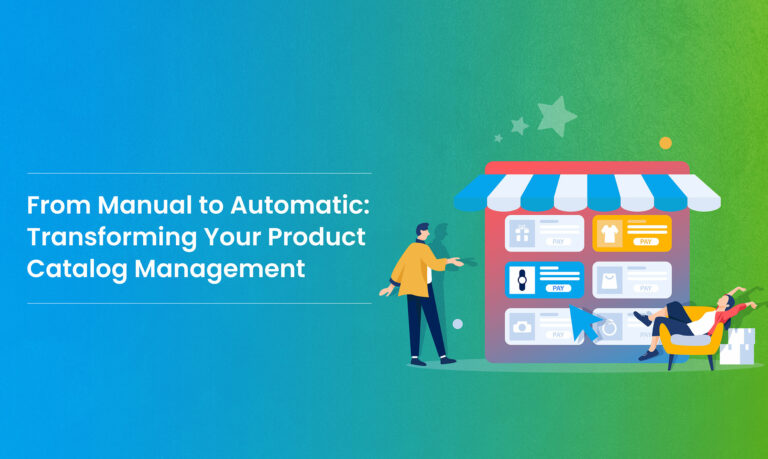At its core, product tagging involves the detailed and systematic assignment of labels to individual items within an inventory, establishing a well-organized framework for effective inventory management. This process goes beyond mere categorization, delving into the nuanced identification and classification of products to create a structured and easily navigable system.
The significance of product tagging must be considered, especially in e-commerce operations. One of its primary advantages lies in its capacity to streamline and optimize various facets of business processes. The meticulous labeling of products facilitates seamless stock tracking, allowing businesses to monitor inventory levels precisely and accurately.
Effective inventory management remains essential to operational effectiveness in the lightning-fast, unpredictable world of e-commerce business, where vast quantities of various items are frequently involved.
Introduction
In the dynamic e-commerce landscape, the efficiency of product tagging is very important for success. As online marketplaces continue to expand, the need for organized and easily discoverable inventory becomes increasingly crucial.
This article focuses on the benefits of efficient product tagging and the transformative influence of Artificial Intelligence (AI) on streamlining this essential process.
Brief Overview of Product Tagging and AI
Efficient product tagging serves as the backbone of effective inventory management in e-commerce. It goes beyond just categorization and influences searchability, user experience, and even search engine visibility. The importance of product tags in SEO is also evident as it allows for easy finding of products, which becomes user-friendly, too.
AI has emerged as a game-changer in improving the efficiency of product tagging. Leveraging AI algorithms for automated product tagging accelerates the workflow. It also enhances accuracy, ensuring that each product is precisely labeled and categorized.
The purpose of this exploration is to understand the profound impact of AI on the efficiency of product tagging in e-commerce. From revolutionizing traditional tagging methods to contributing to effective warehouse management, we aim to unravel how AI technologies are reshaping the landscape of product organization.
The Significance of Product Tagging in E-commerce
Product tagging is a silent architect in the intricate world of e-commerce. It can shape the structure and accessibility of a digital store. Here, we will explore how significant a product code tag can be.
Definition and Importance of Product Tagging
Product tagging is the meticulous assignment of labels to items, creating a structured framework for inventory management. The importance of this process lies in its ability to streamline operations. It facilitates efficient stock tracking and simplifies the overall logistics of an e-commerce business.
How do Product Tags Contribute to SEO Strategies?
Beyond the confines of inventory management, product tags play a strategic role in the digital visibility of a business. In the e-commerce landscape, they are an asset for strategic Search Engine Optimisation (SEO) efforts.
- Meticulous crafting of product tags can transform them into strategic keywords. This aligns with the language and intent of potential buyers. These keywords serve as crucial indicators for search engine algorithms. They signal the relevance and specificity of each product. By understanding the search behavior of their target audience, businesses can infuse product tags in SEO that are not only descriptive but also resonate with likely customer queries.
- The integration of product tags in SEO enhances the likelihood of prominent product appearance in search engine results pages (SERPs). When users input queries aligned with these tags, search engines recognize the relevance and authority of the content. It can position the products in a better rank. This increased visibility can attract organic traffic. This is because potential customers are more likely to explore products that are readily visible and align with their search intent.
By implementing intuitive and descriptive tags, businesses elevate the browsing and search processes for customers. This fosters a seamless shopping journey and encourages exploration. This allows consumers to discover related items and similar products effortlessly. Hence, the overall satisfaction of the customer is enhanced, contributing to brand loyalty.
So, product tagging comes with dual functionality. They can work as organizational tools and SEO assets. On the one hand, they aid in categorizing and structuring the inventory, facilitating efficient backend operations. On the other hand, these very tags become a search engine guide for potential customers. It ensures that the products are well-organized and readily accessible to those actively seeking them.
Challenges in Traditional Product Tagging Processes
The manual tagging processes pose distinctive challenges transcending the digital realm. Traditional methods encounter several limitations that impede operational efficiency. From the risk of human error to the time-consuming nature of the process, these challenges extend beyond mere inconvenience. It impacts the accuracy and timeliness of inventory-related tasks.
The repercussions of manual product tagging get repeated throughout the logistics chain. It affects warehouse management and makes it complicated to locate and organize inventory. Additionally, the accuracy of shipped products becomes susceptible to human error. This leads to potential setbacks in shipment. The tracking of product codes, vital for inventory accuracy, becomes a cumbersome task prone to mistakes.
The Rise of Automated Product Tagging
In response to the limitations posed by manual tagging processes, the e-commerce landscape is witnessing a transformative shift towards automated product tagging.
Automated product tagging involves the utilization of advanced technologies, particularly AI algorithms, to replace or augment manual efforts in assigning and managing product tags.
Definition
Automated product tagging represents a paradigm shift in how products are labeled and categorized within an inventory. Instead of relying solely on human labor to assign and manage product tags, businesses are now deploying automated systems that leverage AI algorithms. This shift eliminates the constraints of human error and time-intensive workflows, unlocking a new era of efficiency and precision.
AI uses machine learning algorithms for systems to learn from data patterns and adapt to evolving circumstances. This adaptability is key to continuously improving the tagging process.
Utilization of Advanced Technologies
The cutting-edge technologies used for automated product tagging primarily focus on AI algorithms. These intelligent systems are designed to copy. It can even surpass human capabilities in recognizing patterns, understanding context, and assigning relevant tags to products. The use of AI ensures a level of sophistication. It goes beyond rule-based approaches, enabling dynamic adaptation to evolving data patterns and complexities within the inventory.
Integration into the Traditional Tagging Process
Rather than imposing a disruptive change, automated product tagging systems are designed to blend with existing workflows effortlessly. This integration ensures a smooth transition from manual to automated processes. It minimizes disruptions while maximizing the benefits of technological advancements.
How Machine Learning Algorithms Enhance Accuracy in Tagging
Machine learning algorithms excel at processing vast datasets. It can extract meaningful patterns and recognize intricate relationships within the data. Unlike rigid rule-based systems that rely on predefined instructions, machine learning algorithms analyze extensive information. It allows them to comprehend the nuanced characteristics and variations present in product tagging.
As it encounters diverse product attributes and characteristics, the algorithm identifies subtle correlations that might otherwise be challenging through manual rule-setting. This adaptability ensures that the tagging process is not confined to pre-established guidelines. Hence, it evolves organically based on the inherent complexities present in the dataset.
Machine learning algorithms evolve through continuous exposure to new data. With each iteration, the algorithm refines its understanding of product attributes, categories, and relationships. This continuous learning process ensures that the algorithm remains relevant in dynamic e-commerce environments. This is where trends, preferences, and inventory structures are subject to change. The result is an ever-improving accuracy in the assignment of relevant product tags.
Example
One of the leading e-commerce brands, Diesel, has new products coming in every season. All of them needed to be sorted, photographed, styled, and then forwarded to the team for manual product tagging. There was inconsistency, slow onboarding time, and many other challenges. To address this issue and enhance efficiency, they opted for an automated product tagging solution. The positive outcomes include:
- Faster product digitization
- Decreased effort
- Better product discovery
- Optimized pages, etc.
Automated product tagging, fueled by AI, marks a pivotal advancement in the realm of e-commerce operations. The strategic integration of technology addresses the manual process’s limitations and also propels businesses toward unprecedented levels of accuracy, efficiency, and adaptability in product tagging.
Benefits of AI in Product Tagging, Warehouse Management, and Shipment Accuracy
The convergence of AI, product tagging, and warehouse management marks a transformative synergy. It reshapes the landscape of operational efficiency in e-commerce.
Warehouse Organisation: AI-driven product tagging ensures precise categorization within the warehouse. Smart algorithms analyze product attributes, assigning appropriate tags that facilitate systematic placement. It can optimize storage space and expedite order retrieval.
Shipment Tracking: Each product’s unique identifier, embedded through automated product tagging, allows for real-time monitoring. It reduces errors and enhances product visibility throughout the shipment journey.
Minimizing Errors: AI-driven product codes and tags can reduce errors during warehouse operations. By automating the process, AI minimizes the risks associated with manual oversight. It ensures that the right products are picked and packed with unparalleled accuracy.
Efficient Inventory Tracking: AI’s intelligent algorithms continuously monitor inventory levels. It can predict demand patterns and adapt to fluctuations. This prevents overstock or stockouts and also ensures that the warehouse maintains an optimal inventory level, minimizing carrying costs.
Order Fulfilment Optimization: AI-driven insights derived from product tagging contribute to optimized order fulfillment. Predictive analytics can anticipate order trends. It enables businesses to position products strategically, streamline picking processes, and reduce fulfillment times. This eventually leads to enhanced customer satisfaction.
The adaptive learning capability of AI allows the system to evolve with changing product attributes, market dynamics, and customer preferences. It enhances the overall agility of warehouse operations, allowing businesses to respond to shifts in the e-commerce landscape proactively.
Challenges Overcome and Benefits Realised
| Challenges in the Manual Tagging Process | AI Solutions Addressing Challenges |
| Human Error | AI minimizes human error by automating the tagging process and ensuring consistent and accurate product labeling. |
| Time-consuming | AI streamlines the tagging process, handling large datasets swiftly. |
| Limited Scalability | AI solutions can handle a growing inventory without compromising accuracy or speed. |
| Lack of Adaptability | AI continuously learns and adapts to evolving patterns, ensuring relevance and accuracy even in dynamic e-commerce environments. |
| Inconsistent Categorisation | AI ensures uniformity in categorization, providing a standardized and reliable structure for product organization. |
| High Labour Costs | AI reduces labor costs associated with automated tagging solutions. |
| Limited Data Analysis | AI-driven systems analyze vast datasets, providing valuable insights into customer behavior, preferences, and market trends. |
Conclusion
Professionals like Rubick.ai help businesses take advantage of AI-powered product tagging with their advanced solutions. With the new era of efficiency, accuracy, and adaptability, you can stay ahead in the dynamic e-commerce landscape.


